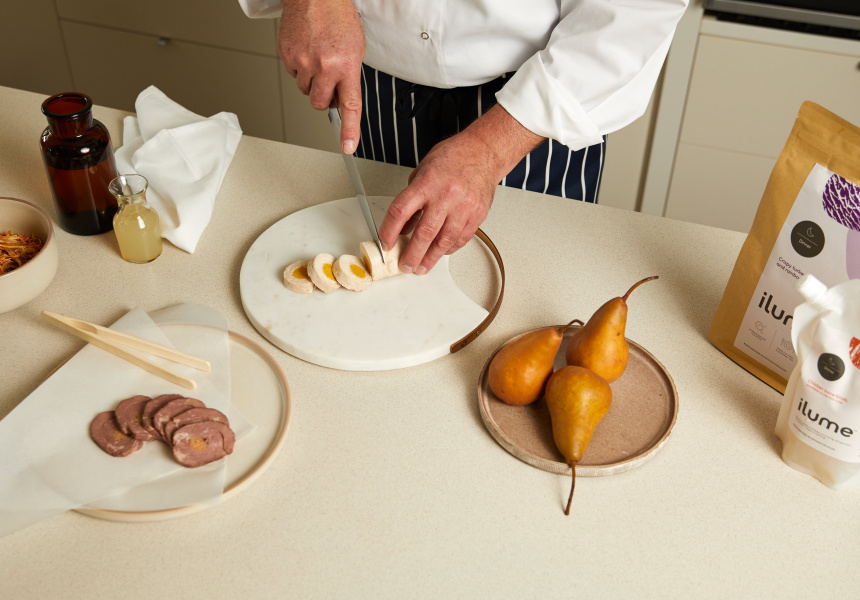- March 27, 2022
- No Comment
- 6 minutes read
What Should You Actually Be Feeding Your Dog? – Broadsheet

Ilume
Ilume
Ilume
Dog food used to be variations of slop in a can, with perhaps the odd bone from the local butcher. But today, with dogs likely to be treated more like family members than working companions, their dietary choices have become seriously diverse and sometimes bewildering. If dogs really are our best friends, we should want them to eat well and be as healthy as possible.
So how do we know if our dogs are getting the right nutrition, and what can we do to monitor their health? Gary Sauer, chef at pet health company Ilume, says the first thing to do is to think more like your dog, or rather, start thinking as though your dog is more like you. “The first thing I’d ask myself when I go to feed my border collie is: ‘Would I eat that myself?’,” he says.
Sauer isn’t suggesting you take a few bites of your dog’s dinner first (how would your dog feel about that, for starters?). He means consider the quality, freshness, and nutritional value of what you’re serving up. “There’s actually a lot of science behind the ideal diet for a dog,” says Sauer. “There’s not a one-size-fits-all solution. It all depends on the needs of the individual dog.”
As with human diets, the key is balance. But a balanced diet for dogs is a different thing to a balanced diet for humans. Sauer says some people cook food at home for their dog, “but it doesn’t necessarily give the balance the dog needs. You’ve got to have a certain amount of fat and protein, as well as a small amount of carbohydrates.”
Sauer says unlike humans who use carbs as a main energy source, dogs can efficiently utilise fat and will choose fats over carbs when given the option. Ensuring you’re providing enough fats for energy, as well as adequate protein for essential body functions is key to a healthy dog. “That’s the balance you really need to get right,” says Saur. “But dogs also have to work a lot harder to get their energy out of protein, so you can’t give them a full protein diet.”
Dietary needs vary depending on the dog’s age and activity levels. An active dog will require more energy, for starters. Because younger dogs tend to be more active, they will have different nutritional requirements and serving sizes compared to older dogs.
Technology can help you wade through all those variables. With age, breed, weight and activity levels being so important to determine the right diet for your dog, it can be difficult to work out if your dog is getting the nutrition it needs. Sauer says Ilume has developed an ecosystem that combines gourmet nutrition and personalised health tracking matched to your dog’s needs. The tracker, bowl and app monitor your dog’s nutritional intake, activity and sleep, providing tailored data for each dog to guide feeding time. “You can use that information to continually adjust the diet, until you get that right balance,” says Sauer. “It takes the guesswork out of the equation.”
Above all, Sauer says to use your common sense, and if you’re unsure, ask yourself how you would feel eating what your dog is having. “Kibble is not necessarily a bad thing. But the fact you can put something on the shelf for three years rings alarm bells. You’ve got to mix it up, too. If you eat takeaway every day it’s not going to be good for you. The same rule applies for your dog. Look for clean, natural foods that you would eat yourself.”
Above all, it’s about making sure their diet contributes to their health – and giving them their best chance at a happy and healthy life.
Here are Gary Sauer’s top tips for what to consider when feeding your dog:
– Focus on a mix of protein and fat, with fewer carbs.
– Ask yourself if you’d eat what your dog is eating. If the answer is “hell no” then reconsider what’s in your dog’s bowl. Ideally, the food should be fit for human consumption.
– Don’t guess, use technology to help you work out how much to feed your dog. Like with humans, a good diet needs to balance calories in with calories out, and that’s often hard to gauge on your own.
– Don’t feed your dog ‘junk food’. Avoid food high in salt.
– Vary the textures. Dogs love chewing on bones as well as woofing down wet food, so mix it up to keep your dog interested and stimulated.
– Learn the foods that are known to be toxic for dogs, such as chocolate, onion, garlic, avocado, grapes, macadamias and caffeine.
– Question the ingredients and read the packet. Don’t compromise on quality or nutrition just because it’s dog food.
– Monitor your dog’s health and adjust its diet accordingly. Tech can help with this too.
This article is produced by Broadsheet in partnership with Ilume.
07 Mar 2022
16 Feb 2022
07 Feb 2022
04 Jan 2022

